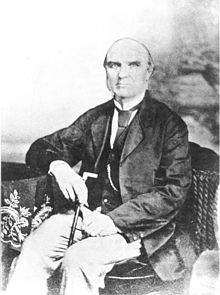Norman Robert Pogson
| Norman Robert Pogson | |
|---|---|
 |
|
| Born |
23 March 1829 Nottingham, England |
| Died | 23 June 1891 (aged 62) Chennai, India |
| Nationality | English |
| Fields | Astronomy |
| Notable awards | Lalande Prize (1856) |
Norman Robert Pogson, CIE (23 March 1829 – 23 June 1891) was an English astronomer who worked in India at the Madras observatory. He discovered several minor planets, made observations on comets and deduced a mathematical scale of stellar magnitudes with the ratio of two successive magnitudes being the fifth root of one hundred (~2.512) and referred to as Pogson's ratio.
Norman was born in Nottingham, the son of George Owen Pogson, a hosiery manufacturer, lace dealer and commission agent, "with enough income to support an extended family", and his wife, Mary Ann. It was intended that he should follow his father into business, and he was accordingly sent for "commercial education", but he was fascinated by science, and his mother supported and encouraged this interest. His early education was largely informal. He left school at 16, intending to teach mathematics. At the age of eighteen, he calculated with the help of John Russell Hind of the Royal Astronomical Society, the orbits of two comets. He was introduced to astronomy through George Bishop's Observatory at South Villa Regent's Park from 1846. He took an interest in comets and studied Iris, a minor planet that had been recently discovered. He was engaged as an assistant at the Radcliffe Observatory in 1852; a new Heliometer had been installed there in 1850.
After working as an assistant at the South Villa Observatory in 1851, he moved to the Radcliffe Observatory in Oxford in 1852. He received the Lalande medal upon his discovery of the minor planet Isis. His Oxford period was spent studying variable stars and other routine research. In 1854 he helped Sir George Airy conduct an experiment to determine the density of the earth. Pogson was appointed as director at the Hartwell Observatory belonging to John Lee in 1859. He published around fourteen papers from 1859 to 1860 in the Monthly Notices of the Royal Astronomical Society, mostly on variable stars and on minor planets. Sir Charles Wood appointed him as government astronomer for Madras in October 1860.
...
Wikipedia
